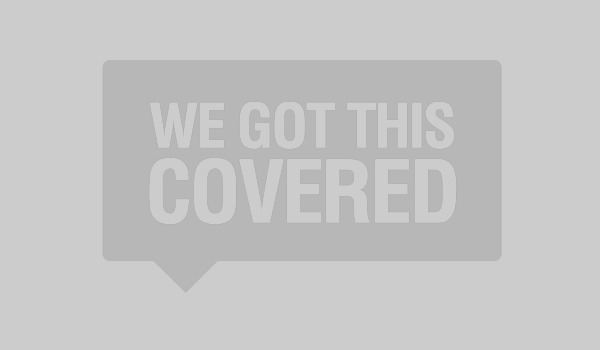id Software has always been known for intense “scalability,” that is to say their games can be made to run on more or less demanding hardware with relative ease (just look at this video of the original Doom running on a Canon printer). So it comes as relatively little surprise, although still some amazement, that Doom (2016) has found its way onto Nintendo’s hybrid console.
The port, being handled by Panic Button (also responsible for the upcoming Rocket League Switch port), will be the focus of this review. It should be known I believe Doom to be a fantastic game, one of the highlights of my 2016 gaming year (and it took top spot in our 2016 Game of the Year Awards). But just because you can play it on Switch, does that mean you should?
My initial impressions, left by the first loading screen, were mixed. I was excited to see that Doom was running on a Switch in the first place; a console that many have feared would lack meaty third party support when it comes to big budget titles such as this. But then I noticed that I was straining slightly to read the text at the bottom of the screen in handheld mode. Uh-oh. “So what,” I thought, “The screen is small, surely in-game assets will appear more clearly.” Turns out, I was only somewhat right.
The thing is, Doom on Switch runs at such a resolution, be it because it’s dynamic or due to the post processing, that I was constantly on the verge of squinting to see distant enemies. This becomes amazingly frustrating, particularly when the muddied visuals create camouflage for already jumpy Imps against the red Mars sand.
We then come to the visuals themselves, which in some cases look pretty good, and in others look like Play-doh. It’s such a mixed bag of medium to low quality assets, that I seriously began to think a playtester went through the level and told the designers which assets players were most likely to see, and they gave those priority. I came around the back end of the first level and saw what I assume was a door, but it was actually just a flat black box with a few low-res blue rectangles on it. It’s mind boggling, and difficult to objectively rate as it’s so inconsistent.
The visual downgrades were certainly done to optimize not only performance, but also game size (the game weighs in at a meaty 22 GB download for digital users, more than 65% of the Switch’s internal memory). The truth is, however, that in wake of the heavily stylized (and gorgeous) Switch releases we’ve seen this year like Mario + Rabbids Kingdom Battle, and the much-lauded Super Mario Odyssey, these graphical shortcuts only serve to remind us of the price of porting big third-party games to Switch.
“So the game isn’t so crisp,” I justified, “The graphics are pretty good in Doom, so surely this was necessary to keep the frame rate steady.” Surprise, the framerate isn’t as steady as I’d hoped. At certain points (even within the first mission) I found things slowing down with framerate dips, which I imagine stems from the Switch’s CPU struggling to keep up with the game’s demands. The port already runs at 30 FPS, half of what the other versions do, but it still manages to dip in high-action scenes. While not entirely frequent, they are almost always noticeable.
For all these faults: it is portable. I played in handheld mode for the majority of this review, because frankly, if you aren’t choosing to play in handheld mode, you might as well play it on more powerful hardware. Handheld mode will be the saving grace of Doom on Switch, and the reasoning used to justified its flawed existence. It’s satisfying to blast demons while laying in bed or out of the house; even using the Switch’s Joy Con attached didn’t cause many problems. It was never the game itself that caused my issues here; Doom is a fun experience in spite of its platform. The sad truth is that playing Doom on Switch made me love it again, enough that I wanted to play it on literally any other platform. In its defense, I’m not able to take my PC or PS4 on a plane for some on-the-go gaming.

To be completely fair, Doom has always had tight and responsive gameplay. What’s on trial here may be the port, but the core game is so fun that even with the visual downgrades, there’s plenty of enjoyment to be found from playing one of 2016’s best titles on the go. It’s hard not to be impressed by what’s here, graphically speaking, considering the size and cost of the Switch. So while the visuals do detract, the game is good enough on its own to pull the experience up a few notches.
Portability will be enough for many to tolerate the ports graphical quirks, but I’m of the opinion that not every game belongs on Switch. It’s an amazing console/handheld/whatever you want to call it, but it make me wonder: is the Switch truly destined to be home to graphically demanding big budget titles? Nintendo certainly knows how to push their hardware to the limit (and to be fair Panic Button did a fairly good job), but only so much can be done with games designed to push even current gen hardware to the max.
While Doom running on the Switch is a marvel, so too was the original running on a Canon printer. And like that “port,” just because you can play it there: should you?
This review is based on the Switch version of the game, which was provided to us by Bethesda.
Fair
DOOM suffers some undeniable downgrades in graphical fidelity on Switch, which anyone could've predicted. It's when these downgrades affect enjoyment of the game, however, that one starts to wonder if it was all worth it.
DOOM Switch Review